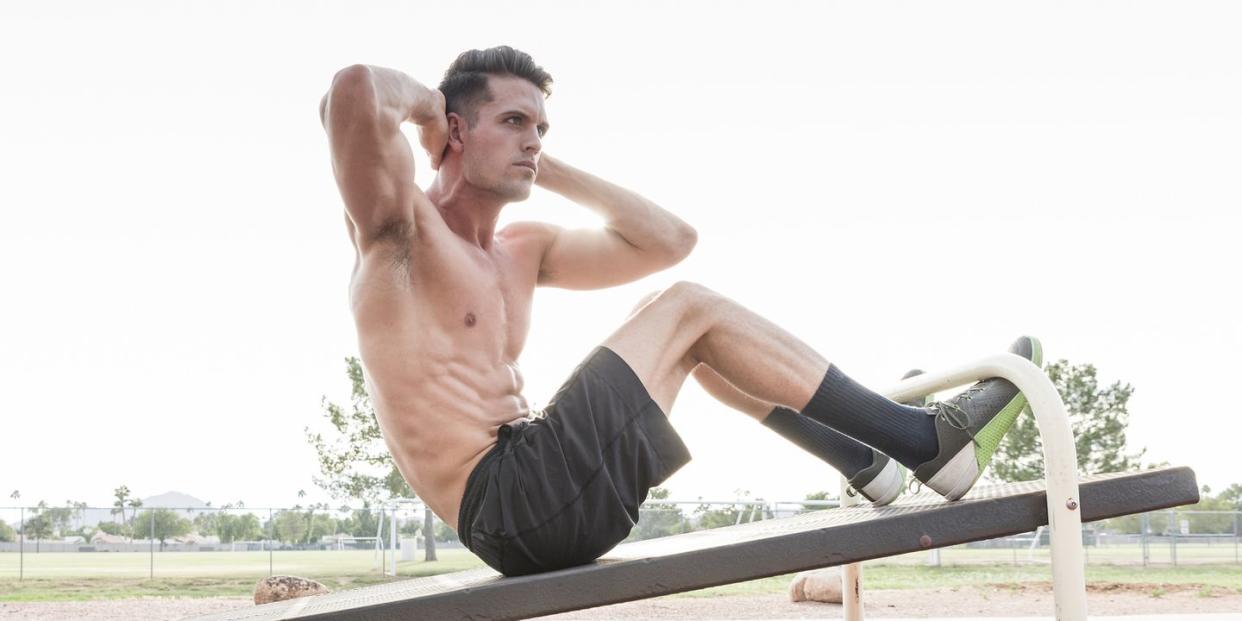A Strength Coach Shared His Top Tips for Shredding Your Abs

The old adage goes that abs are made in the kitchen, and as fitness folk wisdom goes, it's stuck around for a reason: nutrition is an incredibly important part of sculpting your six-pack. But when it comes to the exercise half of the equation, knowing exactly how to train those muscles is crucial. In a new video, YouTuber and bodybuilding coach Eugene Teo offers his advice for making your abs pop—while also building a stronger, healthier core.
While static exercises like planks have core stability-building benefits, especially for beginners, they don't add weight or take the muscles through any range of motion which is required for developing long-term strength, and so Teo advises incorporating movement and resistance into your core-training sessions.
Teo breaks down the three key muscle areas that make up your core, what they do, and how to get the most out of each. Firstly, the rectus abdominis, which make up the most prominently visible part of your abs, control trunk flexion. He recommends exercises which get as much flexion into the trunk and spine as possible, like crunches and leg raises, in order to take the muscles through a full range of motion, as opposed to keeping the upper body rigid, which will actually transpose a lot of that work onto your hip flexors.
Next up are the obliques, which play a role in rotation and diagonal movement. Teo recommends exercises which include side bending and "wood chopping" motions. "The key focus here is to think about bringing the shoulder down towards the opposite side hip," he says.
Finally, there's the transverse abdominis, just under the obliques, which deal with compressing the midsection. Static exercises like planks and hollow body holds are useful here, as well as abdominal tucks, a form of "vacuum training" favored by some bodybuilders as a means of leaning down their waists. This works by bringing your bellybutton in towards your spine as much as possible.
"It helps to do this on a complete exhalation," says Teo, "as that causes the diaphragm to stretch up towards the thoracic region of the spine, which creates more space around the midsection for the transverse abdominis to perform its action of contracting inwards and drawing everything in."
"It's pretty much impossible to isolate any one region through your midsection," he adds. "All of these muscles are interrelated due to their placement and shared roles."
Something else Teo does to maximize the effectiveness of each exercise when training his core is to pair his breath with certain parts of movement. For example, he finds it useful to exhale forcefully when you reach peak contraction. "It helps to fully shorten whatever muscle it is that you're training," he says.
You Might Also Like

